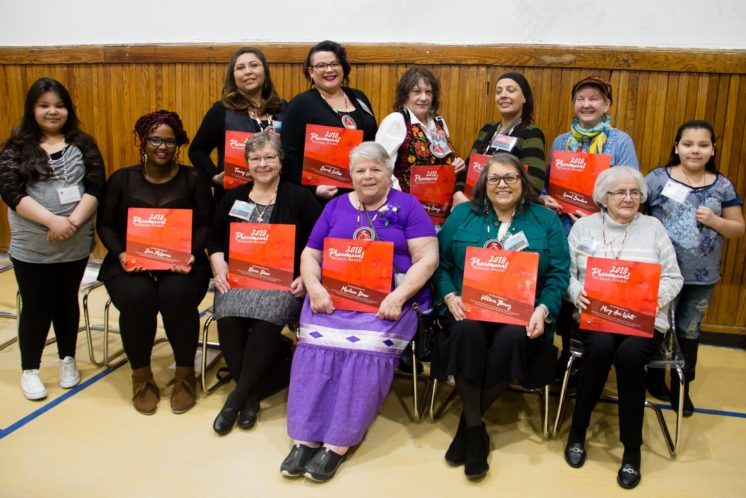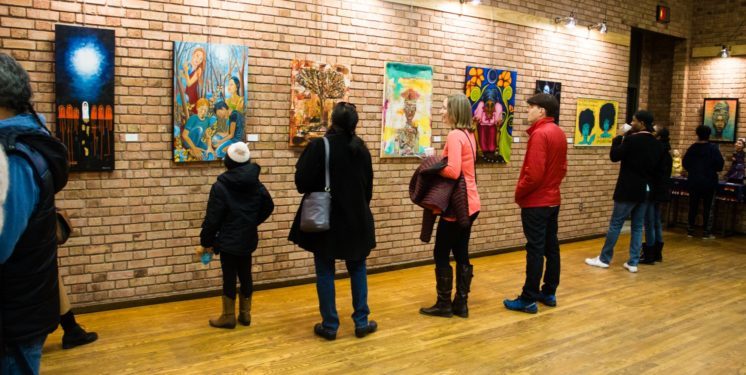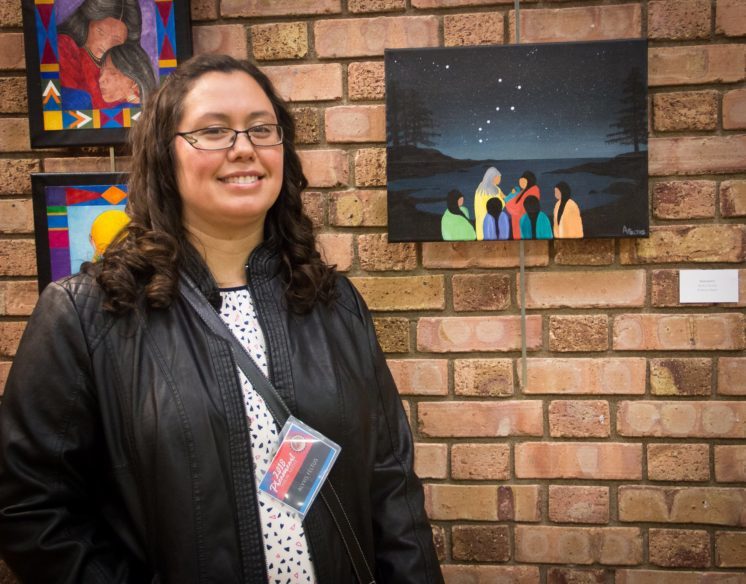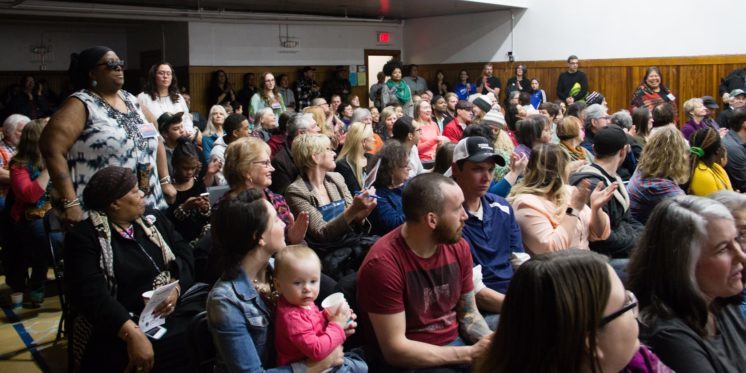Phenomenal Art Exhibition for Women of Color
In continuing a tradition of Duluth “firsts,” the American Indian Community Housing Organization hosted an exhibit last month celebrating artists who identify as women of color. This was the first exhibit to feature only the work of our region’s least represented demographic of artists — Indigenous, Black, Latinx and Asian women. A total of 31 different artists representing a wide range of backgrounds and cultures submitted their work for display in the Dr. Robert Powless Cultural Center, drawing in a crowd of 300 in an opening reception that took place alongside an award ceremony for some of AICHO’s most influential women leaders. As the exhibit comes down this week, here’s a few ideas for reflection …
Despite the incredible support of the community, one question still came up: why doesn’t Phenomenal celebrate women of all colors?
This was a question that was anticipated from the beginning, even if it didn’t always get asked directly. Putting it in mild terms, the question stems from this idea that if white people aren’t included in the exhibit, then the exhibit must be discriminatory or anti-white. However, we could apply this same logic to an exhibit celebrating Scandinavian heritage/history — it must be discriminatory because its criteria is exclusive also, right? Or what about an exhibit dedicated to women artists — is that sexist because it’s exclusive?
The truth is: You can go to virtually every arts space in the region with the guarantee of finding artwork by white-identifying/European-descent artists. You can wager with the same odds that the same can’t be said for POCI-artists; in fact, you might not find these artists represented at all. Although, there’s nothing inherently wrong with art done by non-diverse artists, there is something to be said about this representational divide.
Contrary to popular belief, I don’t think this gap has much to do with demographics either. Yes, minorities collectively make up a small percentage of the population in the region, but I look at AICHO’s gift shop as evidence against the idea that demographics are why we aren’t seeing art by POCI. There’s over 60 indigenous artists alone selling high quality artwork in Indigenous First, from paintings to beadwork, pottery, glass, etc. There’s no shortage of diverse creators in our region, and also no shortage of interested customers willing to pay for their work.
A key thing to remember is that there is a difference between exclusion on the basis of negative stereotyping and a sense of superiority, versus people with a similar historical experience choosing to come together to share in collective healing, storytelling and reflection on shared experiences. An exhibit like Phenomenal has nothing to do with putting white people down or calling them somehow inferior (as is the basis of actual racism, to a great extent). It’s simply making the case that people of historically underrepresented backgrounds deserve some space, somewhere, to exist and to see ourselves. Phenomenal simply carved out this space and then opened it to everyone in the community on its opening night.

Phenomenal Award recipients included Karen Diver, Marlene Diver, Victoria Ybanez, Mary Ann Walt, Laurel Sanders, Wendy Savage, Karen Savage, Tawny Smith Savage, Sarah Curtiss, and Jara McLarren. These women were recognized for their consistent support of and involvement at AICHO, as well as their efforts to address various barriers in the community. Photo by Ivy Vainio.
Recommended Links:
Leave a Comment
Only registered members can post a comment , Login / Register Here


















No Comments